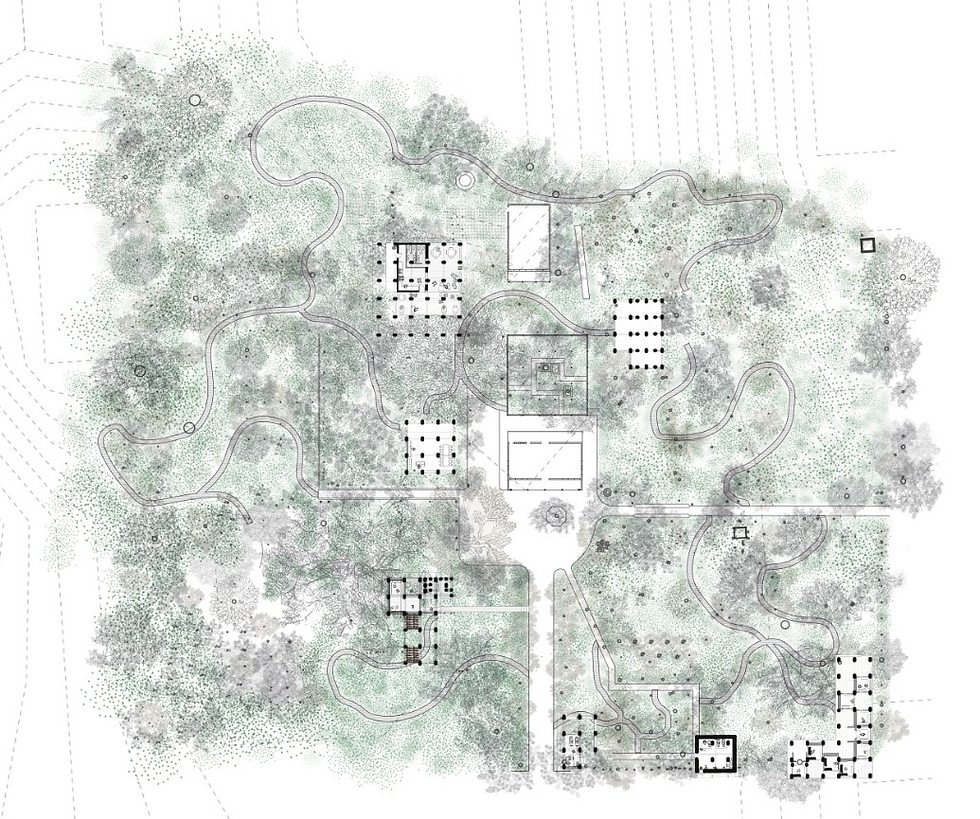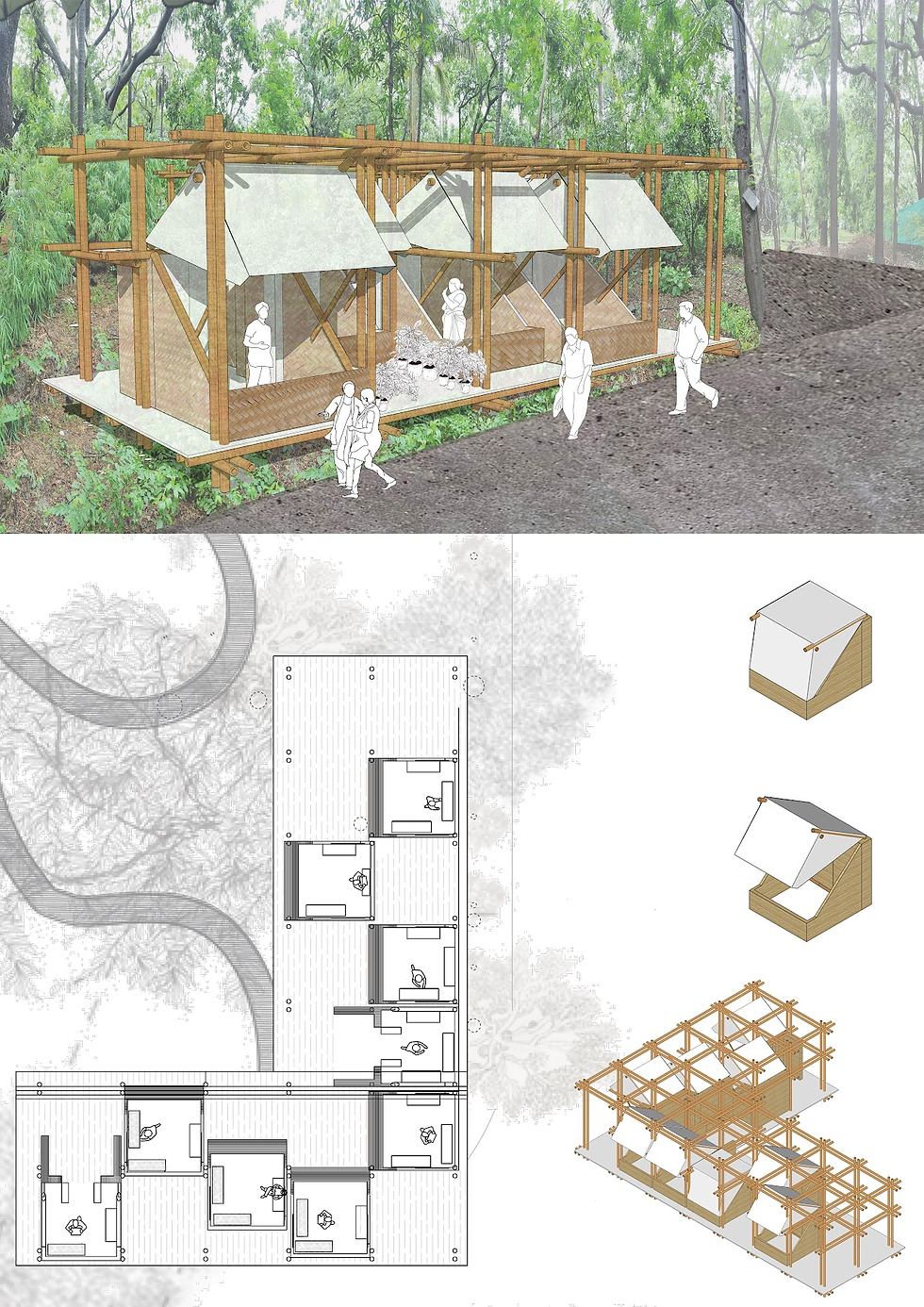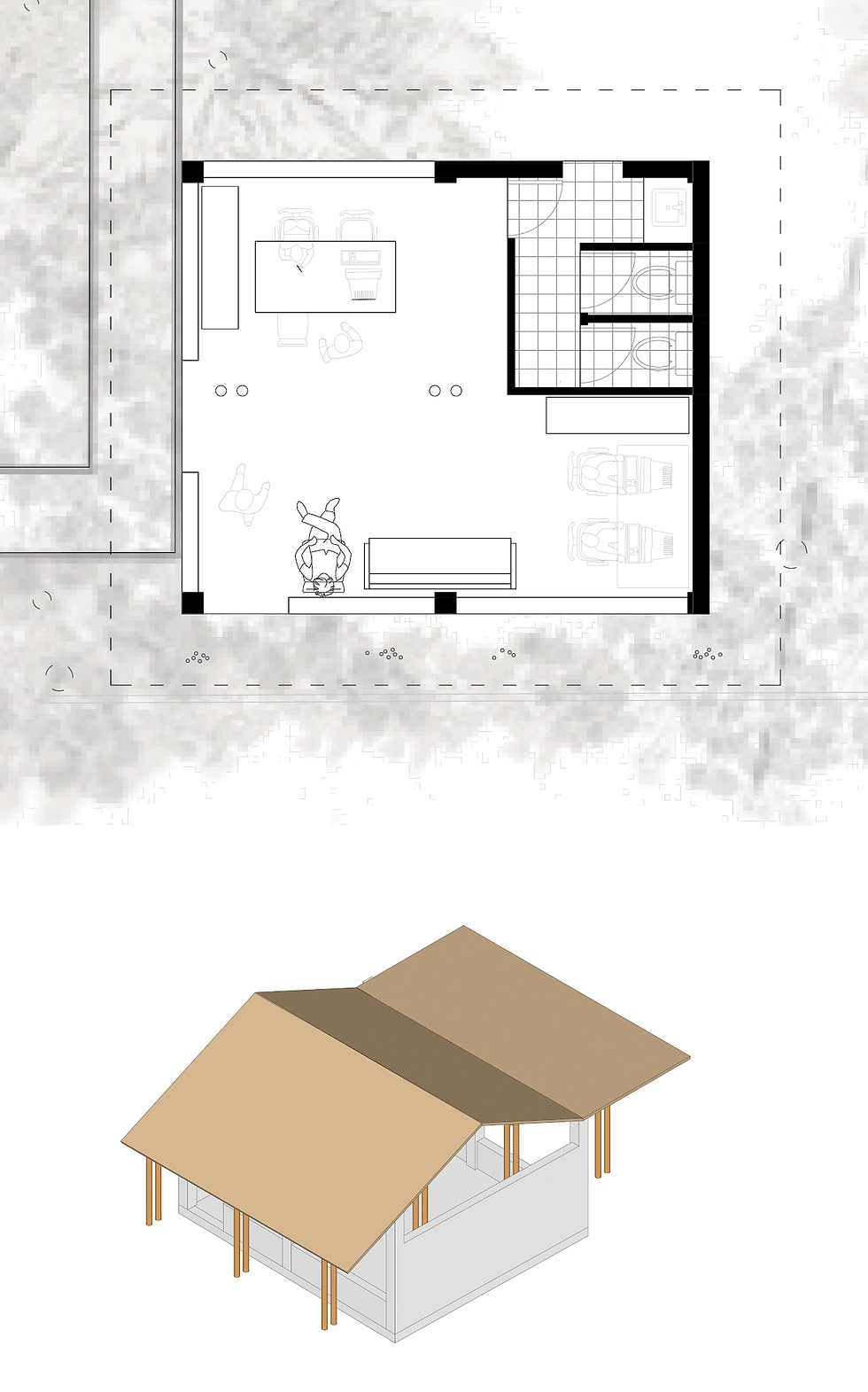BOTANICAL GARDEN
- a21lavanya
- Jul 30, 2023
- 2 min read
Updated: Jul 30, 2023
INTRODUCTION
The idea of the botanical garden is an extension to the existing idea of the nursery where people from the community have been looking after the space and developing different systems to hold, drain water along with taking care of the flora and fauna on the site. A botanical garden can thus draw visitors and serve as an interactive hub for the neighborhood, a great relief from the bustling urban life. The botanical garden serves as a place for visitors to learn about, craft, and interact with nature in addition to urban life. It provides a unique opportunity for individuals to reconnect with nature and learn about various plant species through guided tours and educational programs. Additionally, the botanical garden serves as a hub for local artisans and craftsmen to showcase their work inspired by the natural surroundings, creating a vibrant cultural space within the community.
ZONING:
The site contours were analyzed to know the swampy, steep, and ridge zones of the site and therefore drainage pattern of water from the various locations to the stream. Thus the zoning was done considering these objectives and various functions were decided upon accordingly.

Majorly the site was divided into three zones according to the degrees of publicness of public, semi-public and private space. The public spaces were clubbed together in Zone A where the cafe, workshops, and training centre are placed for the people to interact and occupy the space. The semi-public zones are located in Zone C where the amphitheater, resource centre and nursery are located where visitors can visit and host various private gatherings and functions that can be managed by the organization. The private zone B includes all the admin office spaces where the organizational work takes place along with the road front shops. The shops can be managed by the community to showcase and sell their products and can be locked up during other times for security.



PROCESS
Initially, we started with identifying the existing trees on the site and while doing that we noticed the pattern in which the trees are currently planted. As we enter the nursery one sees perfectly framed tall ashopalav trees planted in a single line on either side of the entrance road. While walking on the other parts of the site one can notice a lot of shade giving dense canopy trees protection from direct sunlight and rains during monsoon. The central part of the site has a shed that has many fruiting trees alongside the smaller patches of the farm where a few vegetable crops have been grown by the villagers. Considering this already existing pattern of trees we added trails made up of halfcut bamboo platforms spanning through the various zones of the site. Along with that, the botanical garden has been planned through different flowering, fruiting plantation zones as well as different zones of species of grass. The proposed plantation zones are planned according to the slope of the terrain and the water-draining capacity of the soil on the site. Therefore the sloping parts with well-drained soil are planned as flowering zones while the flatter parts of the site are made into grasslands and other ornamental canopy trees plantation zones.
-Existing trees layer

-Trails overlayed


SITE PLAN -Roof plan

-Cut plan

DESIGN STRATEGY : About Lattice
-Admin space

-Recource Center

-Green house

-Nursery

-Shops

-Training Centre

-Cafeteria

-Workshop

-Admin 2

BILL OF QUANTITIES:


Comments